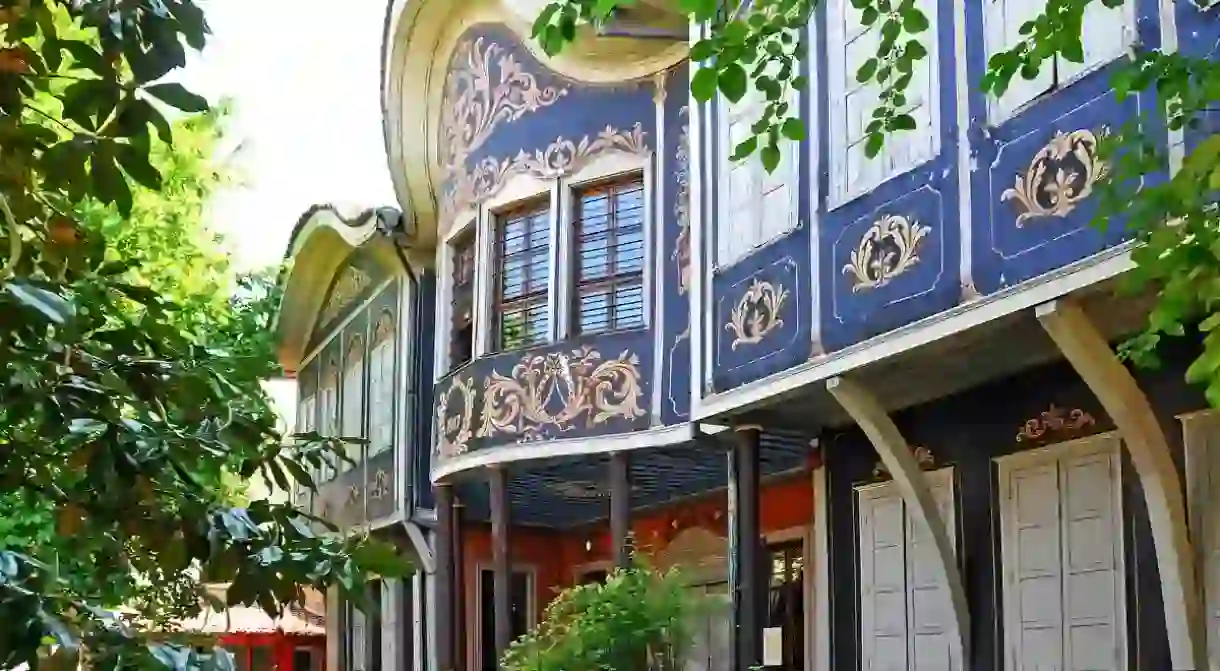8 Fascinating Facts About Bulgarian Revival Architecture

Traditional houses from the Revival Period in Bulgaria are what you see in Old Towns across the country (Plovdiv, Veliko Tarnovo, Koprivshtitsa, Shiroka Laka, etc.). The massive, towering buildings, rich wall paintings, intricate ceiling carvings and spacious reception rooms bear witness to the awakening of national spirit and the growing wealth of Bulgarians in the final century of Ottoman rule. The National Revival Period in Bulgaria is thought to have begun at the end of the 18th century when the first modern history of Bulgaria was written and ended in 1878 when Bulgaria was freed from Ottoman rule. Here are the most important things you need to know about Bulgarian Revival architecture.
The second floor was usually wider than the first
One of the first things you will notice about traditional Bulgarian houses is that the second or third floors were often wider than the lower levels. The upper levels were supported by wooden beams. This feature of the houses is the reason why two houses built on the opposite sides of a street have roofs that almost touch at their highest points.

The large windows on the upper floors were mainly used for gossiping
The rich Revival houses have long rows of windows on their second or third floor. This is where, using natural light, women sewed, embroidered and knit. But these activities were often a cover for a more entertaining hobby. The windows looking onto the street were a perfect spot for checking who was passing with whom and indulging in gossip with passers-by.
The ceilings were a central decorative element
The rich tradesmen’s houses had intricately carved wooden ceilings, which were different in every room. Two of the most impressive carved ceilings you can see are in Plovdiv: in Balabanov House and Nedkovich House in the Old Town.

The ground level wasn’t used for living
The street level of the house was usually used as a workshop (if the owner was a craftsman), a cowshed or a barn (if it was a village house). The second floor was where the family lived and usually all the members cooked, ate and slept in one room. This changed at the end of the Revival Period when the rich houses were built with many rooms.
The yards were verdant
The yards of the houses were green – full of decorative shrubs and vines that were grown high to provide shade on hot summer days. There was also a well. Often a natural mountain spring was incorporated into or right next to the yard, thus uniting nature and architecture.

The chimneys were often decorative
The owners of the houses wanted to show not only their wealth but their taste as well. Don’t forget to look up at the chimney, especially if you are in the Rhodopes. It often had a decorative cone to impress visitors.
The houses along the Black Sea Coast had an entrance for the cat
If you stroll through the Old Towns of Sozopol, Nessebar or Pomorie, you will notice that the first floors of the houses were made of stone (the walls are up to one meter thick), while the second floors are mainly covered in wood. The first floor was where the boats and fishing equipment were kept. There was always a hole for the cat who took care of the fishing nets and food by chasing the mice.

Houses in the Rhodope Mountains looked like fortresses
Traditional houses in the Rhodope Mountains often looked like fortresses because of their towering, rough stone-covered facades and the lack of many (or any) windows on the lower levels. Their roofs were covered in flat stones instead of roof-tiles. Unlike the colorful houses in Koprivshtitsa or Plovdiv, the Rhodope houses were mainly black (the wooden parts) and white.













